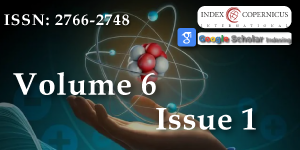Spin ½ model in statistical mechanics and relation to a truncation of the Riemann ξ function in the Riemann Hypothesis
Main Article Content
Abstract
In the search for a solution to the Riemann Hypothesis, we have studied an approach that connects the Riemann Problem with physical modeling that refers to statistical mechanics.
Thus, we study the relation between a truncation of the Riemann ξ function in the variable z = 1-1/s, where s is the usual complex variable (s=Re(s)+i·Im(s) = ρ + i·t) and the partition function of a ferromagnetic spin 1/2 model on a circle C with long-range interaction, to give a concrete look at a strategy for a possible proof of the Riemann Hypothesis.
Article Details
Copyright (c) 2023 Merlini D, et al.

This work is licensed under a Creative Commons Attribution 4.0 International License.
The International Journal of Physics Research and Applications is committed in making it easier for people to share and build upon the work of others while maintaining consistency with the rules of copyright. In order to use the Open Access paradigm to the maximum extent in true terms as free of charge online access along with usage right, we grant usage rights through the use of specific Creative Commons license.
License: Copyright © 2017 - 2025 |  Open Access by International Journal of Physics Research and Applications is licensed under a Creative Commons Attribution 4.0 International License. Based on a work at Heighten Science Publications Inc.
Open Access by International Journal of Physics Research and Applications is licensed under a Creative Commons Attribution 4.0 International License. Based on a work at Heighten Science Publications Inc.
With this license, the authors are allowed that after publishing with the journal, they can share their research by posting a free draft copy of their article to any repository or website.
Compliance 'CC BY' license helps in:
| Permission to read and download | ✓ |
| Permission to display in a repository | ✓ |
| Permission to translate | ✓ |
| Commercial uses of manuscript | ✓ |
'CC' stands for Creative Commons license. 'BY' symbolizes that users have provided attribution to the creator that the published manuscripts can be used or shared. This license allows for redistribution, commercial and non-commercial, as long as it is passed along unchanged and in whole, with credit to the author.
Please take in notification that Creative Commons user licenses are non-revocable. We recommend authors to check if their funding body requires a specific license.
Riemann B. On the number of prime numbers below a given size. Monthly reports of the Berlin Academy. In Collected Works, Teubner, Leipzig (1892), Reprinted by Dover, New York (1953). Original manuscript (with English translation). Reprinted in (Borwein et al., 2008) and (Edwards, 1974). 1859.
Merlini D, Rusconi L. Small Ferromagnetic Systems and Polynomial Truncations of the Riemann Function ξ. Chaos and Complexity Letters. 2018; 12(2): 101-122.
Merlini D, Sala M, Sala N. Riemann wave background. 2019. https://www.researchgate.net/publication/335867792_Riemann_wave_background.
Baxter RJ. Exactly Solved Models in Statistical Mechanics. Academic Press. 1974.
Broughan K. Equivalents of the Riemann Hypothesis: Volume One: Arithmetic Equivalents. Cambridge University Press. 2017.
Broughan K. Equivalents of the Riemann Hypothesis: Volume Two: Analytic Equivalents. Cambridge University Press. 2017.
Conrey B. Riemann’s Hypothesis. American Institute of Mathematics. 2019. https://aimath.org/~kaur/publications/90.pdf
Farmer DW. Jensen polynomials are not a plausible route to proving the Riemann Hypothesis. Advances in Mathematics. 2020; 411:108781.
Merlini D, Rusconi L, Sala M, Sala N. Blocks partition analysis: a possible positivity of the Li-Keiper coefficients. Chaos and Complexity Letters. 2022; 16(2): 95-105.
Merlini D, Sala M, Sala N. Primitive Riemann Wave at Re(s) = 0.9 and Application. Chaos and Complexity Letters. 2020; 14(1): 3-32.

